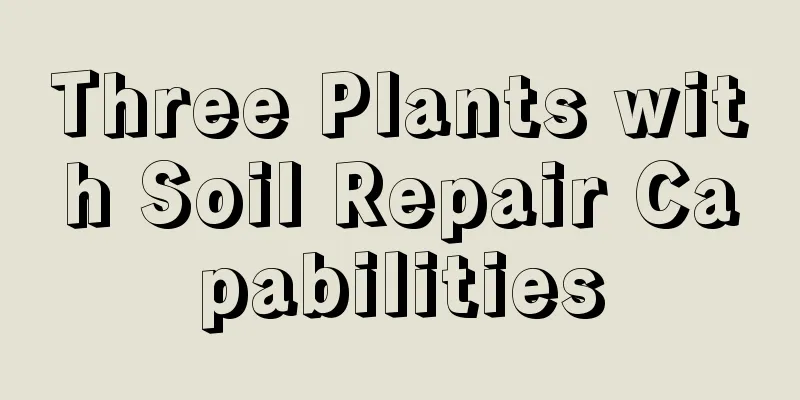Three Plants with Soil Repair Capabilities

willowJade is made up into a tall tree, with thousands of green ribbons hanging down. These two sentences vividly describe the posture of green willows. Willow trees have high ornamental value and come in many varieties. In addition to its most common garden ornamental value, wicker also has good economic value. Due to its unique flexibility, it can be used to make many handicrafts and daily necessities. The wood is commonly used to make paper and artificial cotton. Scientists who are working on soil pollution control have discovered that willow trees can absorb pollutants in the soil very well and transform them. Therefore, they have good pollution treatment functions and have a certain purification effect on the soil. PoplarPoplar trees are tall, straight, and have a beautiful shape, making them of great ornamental value. In many northern regions of my country, poplars are chosen as street trees. In addition to its ornamental value, we have to mention the ecological protection function of poplar. The famous Three North Shelterbelt Project is mainly composed of poplars. The root system of poplars is very developed and can lock in water and soil very well. It is precisely because of this characteristic that people have discovered the role of poplars in preventing wind and fixing sand. In addition, poplar can effectively degrade harmful substances such as toluene in the soil, and plays a great role in soil repair. sunflowerSunflowers are very hardy and easy to grow. In addition to their ornamental, edible and economic value that we all know, what shocks people the most is their purification value. We only know that sunflowers do not have high requirements for the soil in which they grow, but we did not expect that they have a super strong purification function for the soil. Sunflowers can absorb harmful heavy metals in the soil where they are located, and then volatilize and purify them. The editor would like to say that there are still many plants that have the function of repairing the soil, but humans should not entrust their responsibilities to plants. Pollutant emissions in the soil come from our industrial development. Protecting soil resources is the responsibility of each of us, and pollution control itself is to reduce emissions. |
<<: Common garden flowers and trees that bloom before leaves
>>: Common maple tree species classification
Recommend
What are the cultivation methods and precautions of Schefflera arborvitae
How to cultivate Schefflera arborvitae Schefflera...
Methods for accelerating germination of shallot seeds Three methods for raising seedlings of shallot seeds
Scallion is a very easy to cultivate vegetable. I...
How much is the yield of hybrid rice per mu? Analysis of the current yield of hybrid rice per mu
Hybrid rice yield per mu Under normal circumstanc...
The "single-pole" phenomenon of rubber trees and its treatment
The single-stem phenomenon of rubber trees When c...
The difference between Phlox and Verbena
1. Differences in plant types Floca is an annual ...
How to water the nail orchid
Watering principles During the growth period, the...
What flowers are suitable for growing in Guiyang? What are the city flowers and trees?
1. Climate characteristics of Guiyang Guiyang has...
Where do pomegranates grow?
There are many varieties of pomegranates, but mos...
Cedar cultivation methods and precautions
How to grow cedar Moisture Management Cedar has a...
The growing environment and local conditions of apricot trees
Apricot Tree Growth Environment and Conditions Th...
Why can't the colorful calla lily bloom again? Is there any way to make it bloom again?
1. Reasons for not being able to re-spend 1. Diff...
What is vanilla?
1. What is Vanilla does not refer to a single pla...
How to grow Weigela and what to pay attention to
Weigela is a plant of the genus Weigela in the fa...
The most delicious mushrooms ranking delicious and nutritious mushrooms ranking
There are many varieties of delicious mushrooms i...
How to water Nepenthes
Nepenthes watering tips Nepenthes has a relativel...









